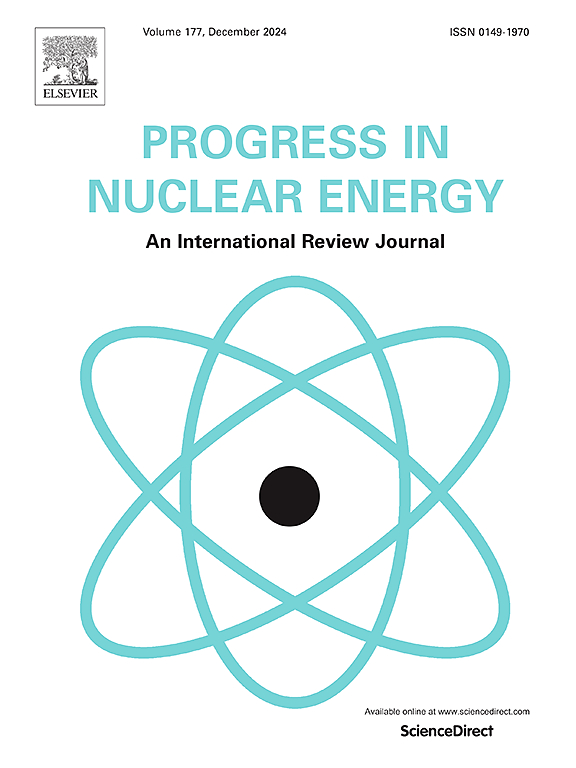Activity inventory of activated materials in distant components of the CENM TRIGA MARK II reactor for decommissioning planning
IF 3.3
3区 工程技术
Q1 NUCLEAR SCIENCE & TECHNOLOGY
引用次数: 0
Abstract
This paper presents a methodology for the activity inventory calculations of activated materials in the distant components of the Moroccan TRIGA MARK II reactor after its final shutdown. The induced activity calculations in components further from the core are more complex due to significant neutron flux attenuation away from the core and spatial variations in the neutron energy spectrum. The described method combines reaction rate calculations with the reactor operating history to estimate the neutron-induced activity in distant components. The MCNP6.2 code was used to calculate the neutron flux distributions throughout the reactor and activation reaction rates to estimate the activity inventory in distant components, including the most remote parts of the concrete shielding. Furthermore, the SSW/SSR technique was applied to support calculations in distant components, reducing the computing time and the statistics error. The activity inventory of activated materials in distant components is presented after a cooling period of six months following the final shutdown, and the main contributing radionuclides to the total activity for each material are identified.
求助全文
约1分钟内获得全文
求助全文
来源期刊

Progress in Nuclear Energy
工程技术-核科学技术
CiteScore
5.30
自引率
14.80%
发文量
331
审稿时长
3.5 months
期刊介绍:
Progress in Nuclear Energy is an international review journal covering all aspects of nuclear science and engineering. In keeping with the maturity of nuclear power, articles on safety, siting and environmental problems are encouraged, as are those associated with economics and fuel management. However, basic physics and engineering will remain an important aspect of the editorial policy. Articles published are either of a review nature or present new material in more depth. They are aimed at researchers and technically-oriented managers working in the nuclear energy field.
Please note the following:
1) PNE seeks high quality research papers which are medium to long in length. Short research papers should be submitted to the journal Annals in Nuclear Energy.
2) PNE reserves the right to reject papers which are based solely on routine application of computer codes used to produce reactor designs or explain existing reactor phenomena. Such papers, although worthy, are best left as laboratory reports whereas Progress in Nuclear Energy seeks papers of originality, which are archival in nature, in the fields of mathematical and experimental nuclear technology, including fission, fusion (blanket physics, radiation damage), safety, materials aspects, economics, etc.
3) Review papers, which may occasionally be invited, are particularly sought by the journal in these fields.
 求助内容:
求助内容: 应助结果提醒方式:
应助结果提醒方式:


